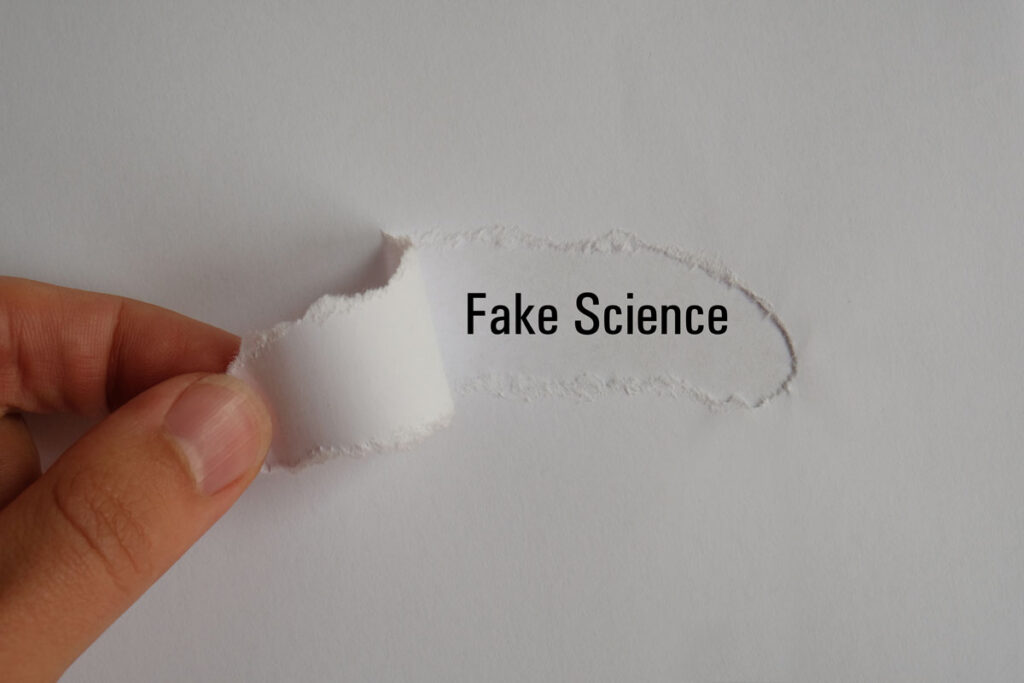
Better regulation of mental health ‘therapies’ urgently needed to protect the vulnerable

A rise in psychological pseudoscience is putting people at risk, psychologists have warned, with social media and celebrity endorsements partly to blame.
Mental health apps, mood-boosting supplements and energy therapies are among the therapies that could do ‘more harm than good’ according to psychologists Jonathan Stea and Stephen Hupp in their new book Investigating Clinical Psychology.
“As discourse around wellness, mental health, therapy, and access to these resources increasingly enter the public domain, the potential of coming across persuasive pseudoscience has also increased,” Stea explains.
“This is the age of health misinformation. It is everywhere. It is in our social media feeds, promoted by celebrities and influencers, and permeates the legacy news media. We are bombarded with advertisements pushing unsupported therapies and practices. Health misinformation has also worked its way into TV shows, movies, and books. And, increasingly, it is embraced and promoted by prominent politicians.”
Separating fact from fiction
Stea, Hupp and a slew of experts in the field have come together in a series of expert-led deep-dives into the world of clinical psychology with a focus on debunking and differentiating between pseudoscientific- and scientific approaches.
The book covers a variety of topics, including crystal healing, detoxing, animal-assisted therapies, hypnosis, and energy medicine.
“There have been many important contributions to clinical psychology that have flourished in the last century, but there has been an equally powerful but harmful rise in pseudoscience,” Hupp explains. “It is great that more people are talking about mental health – but it must be linked to scientific evidence.”
The authors and contributors give evidence to suggest pseudoscience causes direct harm – not only can it take vital time and money away from valid health provision, but it also erodes public trust in healthcare, besides having potentially detrimental effects on the patient themselves.
And the authors argue this is not a theoretical issue, as there are contemporary harmful and/or debunked therapies currently still in use – such as repressed memory practice and conversion therapy.
“If you think about this hypothetical journey, someone who is unwell may self-diagnose on social media with a condition not recognized by the medical community,” Stea says. “They may use a search engine to find out how to ‘treat’ said condition and encounter a scientifically implausible treatment.”
The book also gives historical examples of popular pseudoscientific psychology including primal scream therapy and psychoanalytical theories such as dream interpretation. It also explores the limits of popular psychological tools, like the Rorschach Inkblot Test, hypnotherapy, and the Myers-Briggs Personality Test, and questions the scientific rigor behind the eye-movement component of increasingly popular EMDR, despite considerable evidence supporting its overall efficacy.
The impact of popular culture
In the chapter supplied by Blake Boehme, Andres De Los Reyes, and Gordon Asmundson, they highlight how several professions with little or no mental health training have ‘injected themselves into the mental health landscape’.
They explain that people suffering from poorly understood or unexplained symptoms are particularly vulnerable, as they are desperate for an explanation for their condition and effective treatment.
“The symptoms and distress they experience are real and should be treated with compassion; however, compassion and exploitation should not be mistaken for one another,” they explain.
Some practitioners claim to hold knowledge about a condition that others do not and can gain a cult-like following, they suggest, gaining testimonials from supporters despite a lack of tangible evidence that the cure is accurate and effective.
“The new diagnosis becomes diagnosis du jour, often replacing or displacing the previous diagnosis, with information communications infrastructure (e.g., internet search engines) playing a crucial role in the rapidity of the spread,” they explain.
The authors describe how celebrities have publicly announced their diagnoses by practitioners who treat their conditions with unscientific methods, such as herbal remedies.
“A potent form of anecdote is now derived from celebrities or social media personalities,” they explain. “This anecdotal evidence is spread quickly by modern social media networks and can be subject to a continuous process of manipulation and revision as it spreads from person to person. An individual’s understanding of scientific principles can make them more or less likely to be manipulated by online pseudoscientific claims.”
‘Raising the bar’
To counter this rise in pseudoscience, the book suggests firmer regulation of mental health services and better-quality scientific studies into the efficacy of popular treatment. They endorse a system by which treatments cannot be offered to the public unless they meet strict criteria, including consistent results across large amounts of studies which demonstrate functional outcomes and lasting effects.
Further recommendations in the book include improving science literacy among the public and making health misinformation part of school curriculum so people know what to look out for.
The book’s editors also arm its readers with ‘signs’ of pseudoscience, including those who reverse the burden of proof on skeptics rather than proponents, an absence of connectivity to the broader scientific literature, an over-reliance on testimonials and elevation of anecdotal evidence and use of obscurantist and science-y sounding language.
Hupp concludes: “People with mental health challenges deserve the best, evidence-based therapies such as the many variations of behavioral and cognitive therapies. Looking ahead, it’s time to raise the bar.”